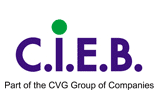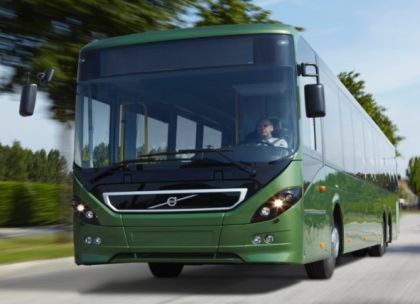
(CZ+ EN) a je pokračováním modelů 8700 a 8500. Bude se vyrábět v Säffle ve Švédsku i ve Wroclawi v Polsku. (New Volvo 8900)
(CZ+ EN) a je pokračováním modelů 8700 a 8500. Bude se vyrábět v Säffle ve Švédsku i ve Wroclawi v Polsku. (New Volvo 8900)
Volvo 8900 bude oficielně představeno
na podzimním veletrhu užitkových vozidel IAA v Hanoveru.
Nový linkový autobus Volvo 8900 je lehčí, palivově účinnější, příznivější pro životní prostředí, s nižšími provozními náklady a zjednodušenou údržbou.
Strukturu karosérie vytváří šroubované hliníkové profily a hliníková střecha. Přední a zadní moduly jsou ocelové. Postranní panely jsou z laminátu a různých plastických hmot lepených ke kostře a jsou snadno vyměnitelné.
Rozdíl v hmotnosti předchůdců a typu 8900 se liší v závislosti na modelu, ale je nižší v rozmezí 200 - 300 kg. Nová konstrukce poskytuje tuhou karosérii, což přispívá k příznivé řiditelnosti pro řidiče a k pohodlí cestujících a také dociluje vysoké míry preciznosti a kvality. Sjednocení do jednoho typu a shoda s některými komponentami městských vozů usnadňuje i poprodejní služby. Také tím roste efektivita Volvo Buses. Společnost může vyrábět Volvo 8900 v obou evropských závodech a řídit tak produkci v závislosti na požadavcích zákazníků.
Pro požadavky vyššího počtu cestujících je nízkopodlažní verze nabízená jako třínápravový 6x2 v délce 13.7 m a 14.7 m. Zákazník si může vybrat mezi sedmi a devítilitrovým motorem (380 HP).
Volvo 8900 nebude vyráběn jako kloubový autobus, protože však zákazníci tentop typ linkového autobusu požadují, společnost nabízí kloubový autobus Volvo 8500 se svisle umístěným devítilitrovým motorem po straně mezi dvěma předními nápravami. Autobus má novou přední část s pracovištěm řidiče.
Z TZ Volvo Buses. Kompletní v angličtině.
Everyone is in agreement that major initiatives are required to reduce the global environmental impact. Across the globe, politicians are making decisions concerning measures to reduce emissions, which affects the bus sector to a great degree.
Bus operators are required to choose vehicles with lower fuel consumption and lower emissions than before. Since a considerable share of cities’ bus traffic is financed through tax funds, bus operators are also required to be more efficient and derive greater value from their bus service from the available tax funds.
“The Volvo 8900 is a solution to these requirements,” says Stefan Guttman. “The Volvo 8900 is an intercity bus with lower environmental impact that features a number of different solutions to reduce the operator’s operating costs.”
In the new Volvo 8900, Volvo Buses has chosen to create an entirely new body with a composite of various materials.
“Through this type of construction, we can use the materials that are best suited for various functions,” says Project Manager Carl-Johan Ragnarsson. “We have thus succeeded in reducing its weight and made it easier and less expensive for the operators to perform maintenance and repair work.”
The body structure consists of aluminum profiles that are bolted together and the roof is also made of aluminum. The major advantages of aluminum are that it is a lightweight and non-corrosive material. The front and rear modules are made of steel, which features such advantages as being easy to mold into an attractive design.
“The side panels are manufactured from fiberglass and various plastics that are glued to the structure,” says Carl-Johan Ragnarsson. “Fiberglass and plastics are lightweight materials that provide smooth and attractive sides for the buses, and the side panels are particularly easy to replace if damaged.”
The new construction provides a rigid body that contributes to favorable drivability for the driver and a high level of comfort for the passengers. The new construction also facilitates the achievement of a very high level of precision and building quality.
“Deploying a single body structure instead of two, as is currently done, also makes it easier for our customers in the aftermarket,” says Stefan Guttman. “Mechanics only have to be familiar with one version and the number of spare parts that must be kept in inventory is clearly reduced. The advantage will be amplified in the coming years since we will be using the same body structure on several of our city bus and intercity models.”
The use of a single body structure also increases Volvo Buses’ efficiency. The company can now manufacture the Volvo 8900 in both of its European plants and switch production between them depending on demand.
The manner in which drivers carry out their work has a considerable impact on passengers’ experience, fuel consumption and wear on the buses, and thus also on the buses’ lifecycle cost.
“We have thus put a great deal of effort into creating a driver’s area that provides drivers with the best possible means to do a good job during a long shift,” says Carl-Johan Ragnarsson.¨
Volvo Buses has interviewed a number of bus drivers, let them test various models, made data simulations and mathematical calculations, all in an effort to identify the most ergonomic solutions.
The driver’s seat on the Volvo 8900 has a long list of adjustable settings for the seat and steering wheel to be universally adaptable regardless of whether the driver is tall or short. The adjustments are situated where the drivers wanted them.
Clear visibility is of the utmost important for a bus driver. The visibility in the Volvo 8900 is outstanding, with large window surfaces, three-part rear-view mirrors and an optional backup camera. The driver’s seat has a personalized climate zone and there are generous storage compartments for the driver’s personal belongings.
For those who need space for more passengers, a low-floor version is also available as a 6x2 in 13.7 and 14.7 meter lengths. In these versions, customers can choose between a seven-liter engine and nine-liter engine with 380 horsepower.
“We have customers that are using our low-entry bogie bus exclusively as a city bus because of its high passenger capacity,” says Stefan Guttman. “Thus far, we have only been able to offer our 12-liter engine, but now customers receive our seven-liter engine instead, which results in significantly reduced fuel consumption.”
The Volvo 8900 will not be available as an articulated bus, although for customers requiring this type of intercity bus, the company still offers the Volvo 8500 articulated bus with a vertically-mounted nine-liter engine situated on the side of the bus between the two front axles. The articulated bus model also features the new front with the exclusive driver’s area.
Low fuel consumption is the most important element in achieving a low life-cycle cost and this contributes to a reduced environmental impact. The latest generation of Volvo’s engines is highly fuel efficient and with the Volvo 8900, the company has managed to further lower fuel consumption as a result of the lower weight of the bus and its new shift program.
The seven-liter and nine-liter engines both meet the Euro 5 emissions standard and the seven-liter engine is also EEV compliant. In addition, the seven-liter engine can be equipped with a particle filter that further reduces particle emissions. The two engines are adapted for operating on up to 100% biodiesel.
Safety is one of Volvo’s core values and permeates all of the company’s actions. The Volvo 8900 is a fundamentally stable construction that meets EU’s R66 rollover standard. The bus features entirely electronically controlled brakes and the bogie version can be equipped with ESP.
All seats can be equipped with two or three-point safety belts. The engine compartment and heating areas feature fire detectors and the engine compartments can be equipped with a sprinkler system.
“Having a reliable bus with low fuel consumption is a requisite for bus operators to be able to conduct an efficient business, but this is not sufficient,” says Stefan Guttman. “There are a number of other factors that also affect the lifecycle cost.”
Accordingly, Volvo Buses offers a package featuring aftermarket services with the Volvo 8900 that helps customers maintain low operating costs.
“This makes it easier for customers to purchase everything they need in one package together with the bus, in addition to which it is financially beneficial,” says Stefan Guttman.
The package includes a service contract in which Volvo Buses assumes responsibility for maintenance and in which the customer pays a fixed monthly fee. Customers can choose between a blue contract whereby Volvo only manages regular maintenance and a gold contract where Volvo is also responsible for all repair work and spare parts.
The package also features an expanded body guarantee, a course in eco-driving for bus drivers and a telematic system that enables the tracking of fuel consumption by the bus and driver. Drivers who have unusually high fuel consumption can receive help by identifying a driving technique that conserves fuel and the environment.
“The customer can also supplement the package with the financing solutions that they find most suitable through Volvo’s financing company, Volvo Financial Services,” says Stefan Guttman.
PR Volvo Buses
Nový linkový autobus Volvo 8900 je lehčí, palivově účinnější, příznivější pro životní prostředí, s nižšími provozními náklady a zjednodušenou údržbou.
Zcela nová karosérie
V současnosti vyrábí Volvo Buses v Evropě dva rozdílné typy linkového autobusu: Volvo 8700 v závodě ve Wroslawi v Polsku s ocelovou karosérií a Volvo 8500 v závodě v Säffle ve Švédsku s hliníkovou karosérií. Karosérie Volvo 8900 je vytvořena kompozicí různých materiálů. Tím je redukována váha a i cena údržby.Strukturu karosérie vytváří šroubované hliníkové profily a hliníková střecha. Přední a zadní moduly jsou ocelové. Postranní panely jsou z laminátu a různých plastických hmot lepených ke kostře a jsou snadno vyměnitelné.
Rozdíl v hmotnosti předchůdců a typu 8900 se liší v závislosti na modelu, ale je nižší v rozmezí 200 - 300 kg. Nová konstrukce poskytuje tuhou karosérii, což přispívá k příznivé řiditelnosti pro řidiče a k pohodlí cestujících a také dociluje vysoké míry preciznosti a kvality. Sjednocení do jednoho typu a shoda s některými komponentami městských vozů usnadňuje i poprodejní služby. Také tím roste efektivita Volvo Buses. Společnost může vyrábět Volvo 8900 v obou evropských závodech a řídit tak produkci v závislosti na požadavcích zákazníků.
Volvo 8900 je dostupné v různých verzích
Pro zákazníky s požadavky na zavazadlový prostor je k dispozici běžná výška podlahy v délkách 12.2 m a 13.0 m se sedmilitrovým motorem Volvo 290 HP. Stejný motor je možno využít i v nízkopodlažním autobusu Volvo 8900 4x2 s délkami 12.0 m a 13.0 m.Pro požadavky vyššího počtu cestujících je nízkopodlažní verze nabízená jako třínápravový 6x2 v délce 13.7 m a 14.7 m. Zákazník si může vybrat mezi sedmi a devítilitrovým motorem (380 HP).
Volvo 8900 nebude vyráběn jako kloubový autobus, protože však zákazníci tentop typ linkového autobusu požadují, společnost nabízí kloubový autobus Volvo 8500 se svisle umístěným devítilitrovým motorem po straně mezi dvěma předními nápravami. Autobus má novou přední část s pracovištěm řidiče.
Z TZ Volvo Buses. Kompletní v angličtině.
New Volvo 8900 meets exacting standards of Green Efficiency
Volvo Buses’ new Volvo 8900 intercity bus is lighter, more fuel efficient and has solutions that facilitate the maintenance of the bus. “We are now able to offer our customers a more environmentally friendly bus that also lowers their operating costs,” says Stefan Guttman, Volvo Buses’ Director of city buses in Europe.Everyone is in agreement that major initiatives are required to reduce the global environmental impact. Across the globe, politicians are making decisions concerning measures to reduce emissions, which affects the bus sector to a great degree.
Bus operators are required to choose vehicles with lower fuel consumption and lower emissions than before. Since a considerable share of cities’ bus traffic is financed through tax funds, bus operators are also required to be more efficient and derive greater value from their bus service from the available tax funds.
“The Volvo 8900 is a solution to these requirements,” says Stefan Guttman. “The Volvo 8900 is an intercity bus with lower environmental impact that features a number of different solutions to reduce the operator’s operating costs.”
Entirely new body
Volvo Buses currently has two different intercity models in Europe: the Volvo 8700, which is built in the plant in Wroclaw, Poland, with a steel body, and the Volvo 8500, which is built in the plant in Säffle, Sweden, with an aluminum body.In the new Volvo 8900, Volvo Buses has chosen to create an entirely new body with a composite of various materials.
“Through this type of construction, we can use the materials that are best suited for various functions,” says Project Manager Carl-Johan Ragnarsson. “We have thus succeeded in reducing its weight and made it easier and less expensive for the operators to perform maintenance and repair work.”
The body structure consists of aluminum profiles that are bolted together and the roof is also made of aluminum. The major advantages of aluminum are that it is a lightweight and non-corrosive material. The front and rear modules are made of steel, which features such advantages as being easy to mold into an attractive design.
“The side panels are manufactured from fiberglass and various plastics that are glued to the structure,” says Carl-Johan Ragnarsson. “Fiberglass and plastics are lightweight materials that provide smooth and attractive sides for the buses, and the side panels are particularly easy to replace if damaged.”
Reduced weight
As a result of the new construction, Volvo Buses has managed to reduce the weight of the Volvo 8900 compared with its predecessors. The weight reduction varies between the different models, but is in the range of 200-300 kilograms. The reduced weight results in the buses being capable of carrying more passengers and contributes to lower fuel consumption.The new construction provides a rigid body that contributes to favorable drivability for the driver and a high level of comfort for the passengers. The new construction also facilitates the achievement of a very high level of precision and building quality.
“Deploying a single body structure instead of two, as is currently done, also makes it easier for our customers in the aftermarket,” says Stefan Guttman. “Mechanics only have to be familiar with one version and the number of spare parts that must be kept in inventory is clearly reduced. The advantage will be amplified in the coming years since we will be using the same body structure on several of our city bus and intercity models.”
The use of a single body structure also increases Volvo Buses’ efficiency. The company can now manufacture the Volvo 8900 in both of its European plants and switch production between them depending on demand.
Driver’s area decisive
High standards are imposed on bus drivers who operate city and scheduled routes. They must be completely focused on traffic to be able to drive safely, while simultaneously adhering to stressful schedules. They must also greet passengers in a friendly and positive manner.The manner in which drivers carry out their work has a considerable impact on passengers’ experience, fuel consumption and wear on the buses, and thus also on the buses’ lifecycle cost.
“We have thus put a great deal of effort into creating a driver’s area that provides drivers with the best possible means to do a good job during a long shift,” says Carl-Johan Ragnarsson.¨
Volvo Buses has interviewed a number of bus drivers, let them test various models, made data simulations and mathematical calculations, all in an effort to identify the most ergonomic solutions.
The driver’s seat on the Volvo 8900 has a long list of adjustable settings for the seat and steering wheel to be universally adaptable regardless of whether the driver is tall or short. The adjustments are situated where the drivers wanted them.
Clear visibility is of the utmost important for a bus driver. The visibility in the Volvo 8900 is outstanding, with large window surfaces, three-part rear-view mirrors and an optional backup camera. The driver’s seat has a personalized climate zone and there are generous storage compartments for the driver’s personal belongings.
Significant range of models
The Volvo 8900 is available in different versions. For customers who need a bus with luggage space, a normal-floor version is available in a 12.2 meter and 13.0 meter variety. It is equipped with Volvo’s seven-liter 290-horsepower engine. The seven-liter engine is also available in the Volvo 8900 low-floor 4x2, which comes in 12.0 and 13.0-meter versions.For those who need space for more passengers, a low-floor version is also available as a 6x2 in 13.7 and 14.7 meter lengths. In these versions, customers can choose between a seven-liter engine and nine-liter engine with 380 horsepower.
“We have customers that are using our low-entry bogie bus exclusively as a city bus because of its high passenger capacity,” says Stefan Guttman. “Thus far, we have only been able to offer our 12-liter engine, but now customers receive our seven-liter engine instead, which results in significantly reduced fuel consumption.”
The Volvo 8900 will not be available as an articulated bus, although for customers requiring this type of intercity bus, the company still offers the Volvo 8500 articulated bus with a vertically-mounted nine-liter engine situated on the side of the bus between the two front axles. The articulated bus model also features the new front with the exclusive driver’s area.
Low fuel consumption is the most important element in achieving a low life-cycle cost and this contributes to a reduced environmental impact. The latest generation of Volvo’s engines is highly fuel efficient and with the Volvo 8900, the company has managed to further lower fuel consumption as a result of the lower weight of the bus and its new shift program.
Further reduced fuel consumption
The Volvo 6x2 with the nine-liter engine is equipped with Volvo’s proven fuel-efficient I-shift transmission, which was made even more efficient in conjunction with the implementation of the Euro 5 standard. In the other models, customers can choose between the ZF and Voith transmissions featuring the new Topodyn and Sensotop shift programs, which adapt shifting to the topography, thus further reducing fuel consumption.The seven-liter and nine-liter engines both meet the Euro 5 emissions standard and the seven-liter engine is also EEV compliant. In addition, the seven-liter engine can be equipped with a particle filter that further reduces particle emissions. The two engines are adapted for operating on up to 100% biodiesel.
Safety is one of Volvo’s core values and permeates all of the company’s actions. The Volvo 8900 is a fundamentally stable construction that meets EU’s R66 rollover standard. The bus features entirely electronically controlled brakes and the bogie version can be equipped with ESP.
All seats can be equipped with two or three-point safety belts. The engine compartment and heating areas feature fire detectors and the engine compartments can be equipped with a sprinkler system.
Alcoloc designed for buses
To increase passenger safety, Volvo has developed an integrated surveillance camera that can be installed in all versions of the Volvo 8900. Volvo Buses has also developed an alcohol lock that is specifically designed for bus traffic. The engine can be started without a breathalyzer, but the breaks remain locked if the driver who takes the breathalyzer test is inebriated“Having a reliable bus with low fuel consumption is a requisite for bus operators to be able to conduct an efficient business, but this is not sufficient,” says Stefan Guttman. “There are a number of other factors that also affect the lifecycle cost.”
Accordingly, Volvo Buses offers a package featuring aftermarket services with the Volvo 8900 that helps customers maintain low operating costs.
“This makes it easier for customers to purchase everything they need in one package together with the bus, in addition to which it is financially beneficial,” says Stefan Guttman.
The package includes a service contract in which Volvo Buses assumes responsibility for maintenance and in which the customer pays a fixed monthly fee. Customers can choose between a blue contract whereby Volvo only manages regular maintenance and a gold contract where Volvo is also responsible for all repair work and spare parts.
Advantages for customers
“The advantage for the customer is that they are aware of the maintenance costs in advance. They can also place their undivided attention on traffic since Volvo will ensure that the buses are always in the best condition.”The package also features an expanded body guarantee, a course in eco-driving for bus drivers and a telematic system that enables the tracking of fuel consumption by the bus and driver. Drivers who have unusually high fuel consumption can receive help by identifying a driving technique that conserves fuel and the environment.
“The customer can also supplement the package with the financing solutions that they find most suitable through Volvo’s financing company, Volvo Financial Services,” says Stefan Guttman.
PR Volvo Buses
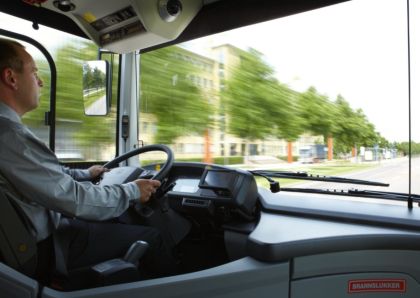
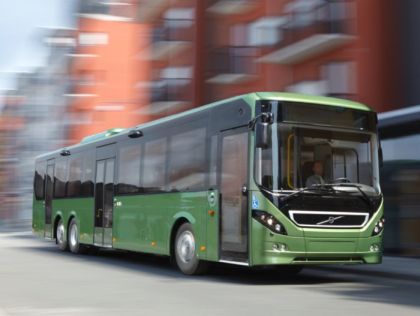
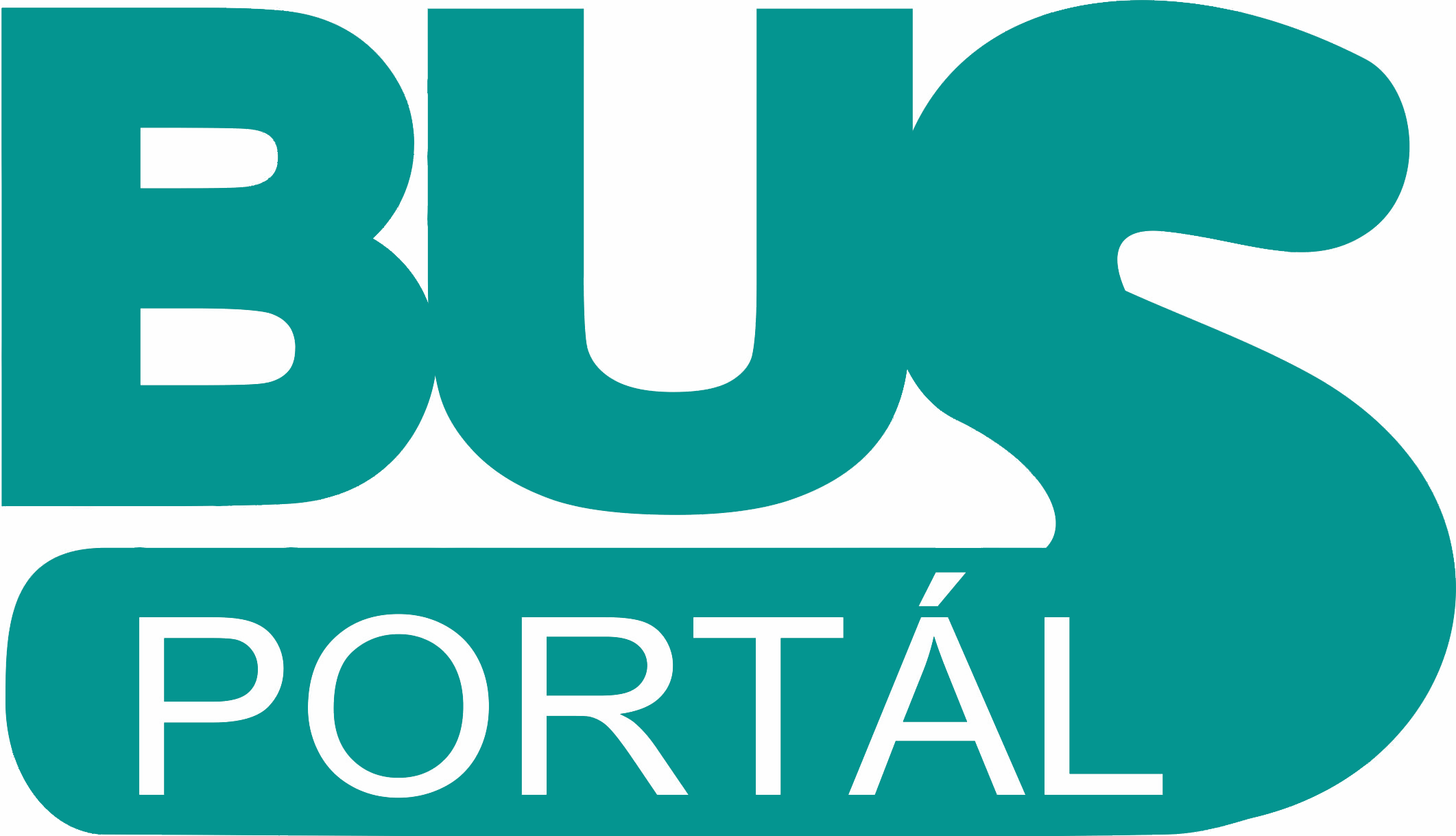


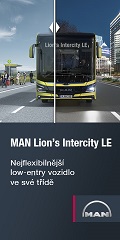
.gif)
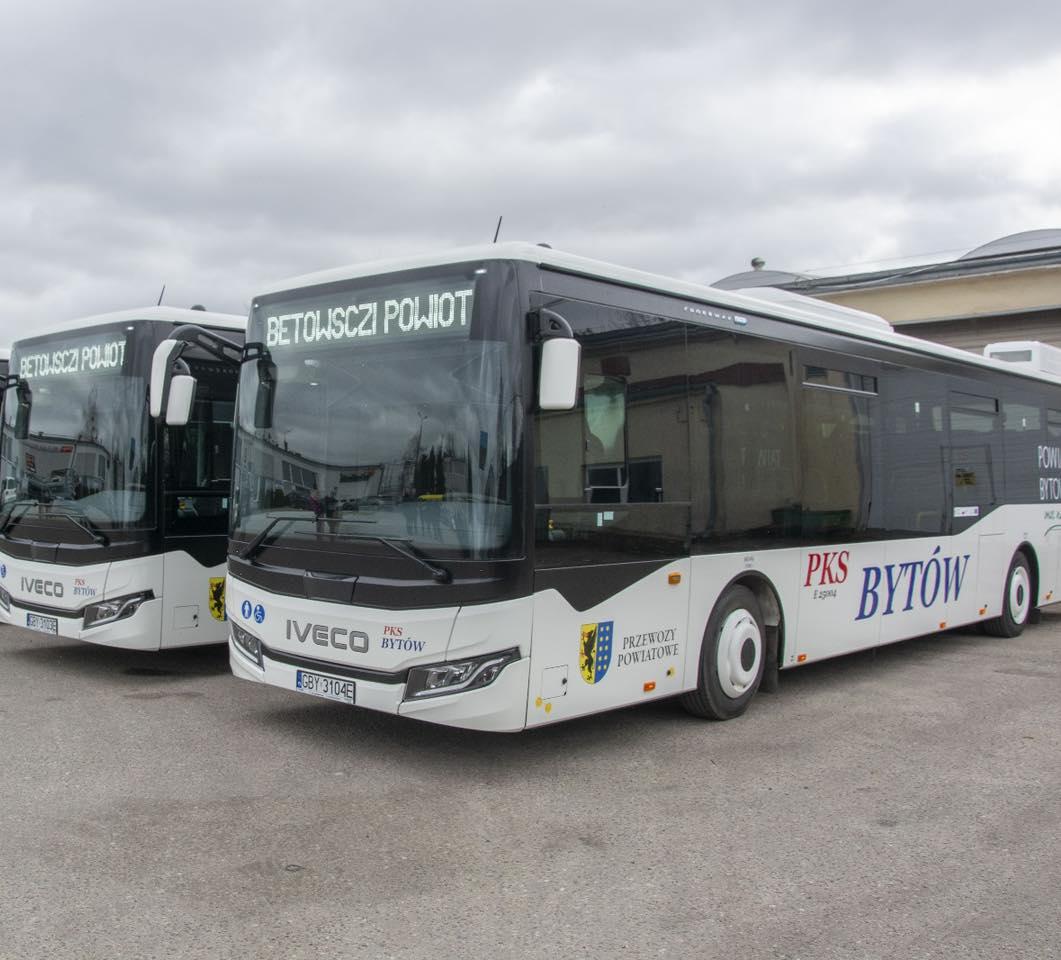 Hybridní autobusy Iveco Crossway pro Bytów
Hybridní autobusy Iveco Crossway pro Bytów
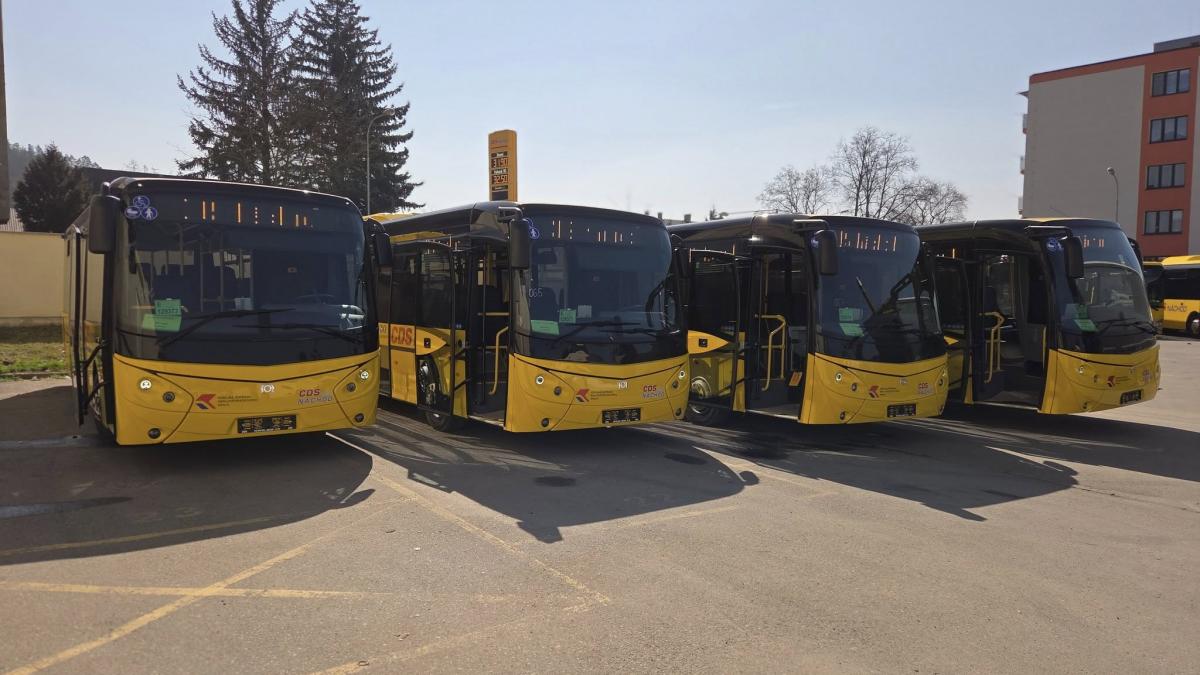 Nové žluté autobusy SOR v CDS Náchod
Nové žluté autobusy SOR v CDS Náchod
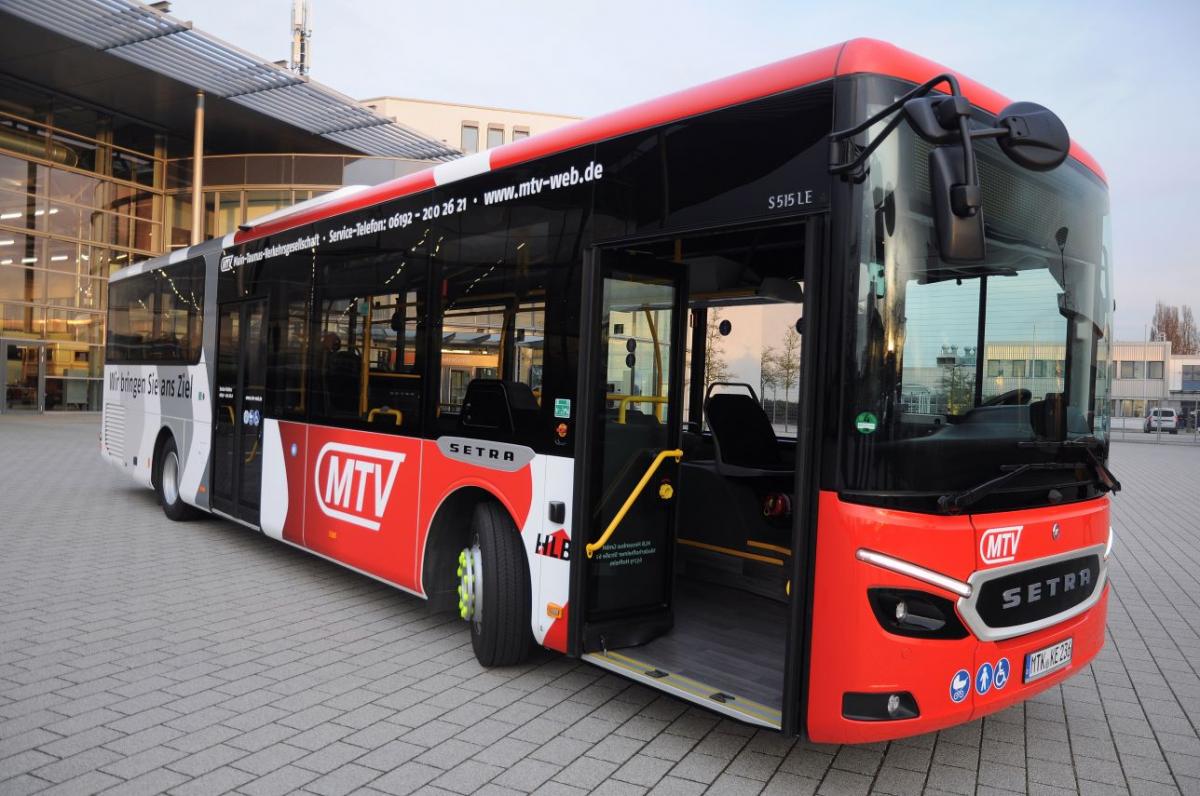 Nízkopodlažní Setry pro dopravce v Německu
Nízkopodlažní Setry pro dopravce v Německu





